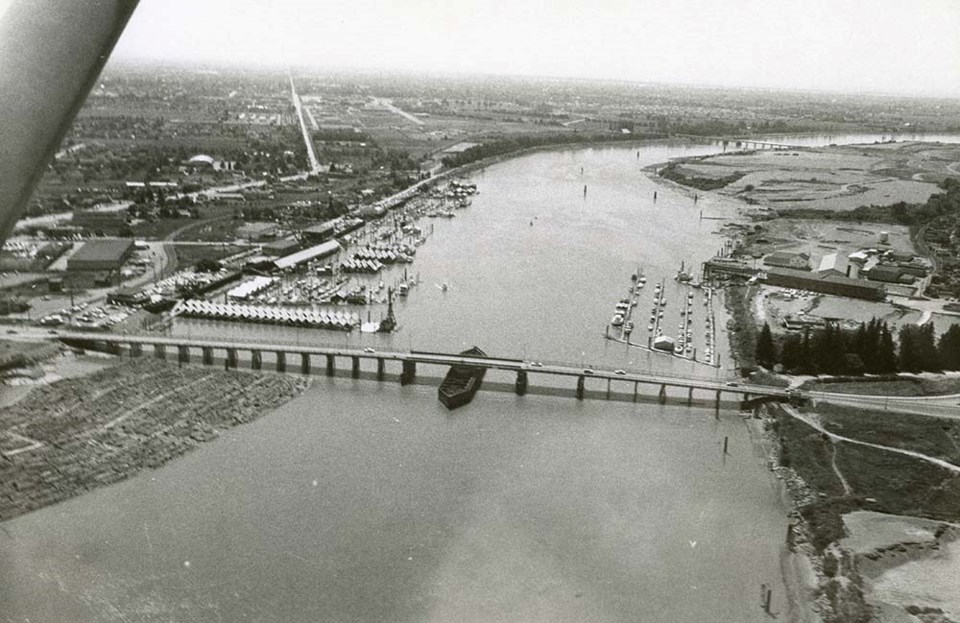A retired federal biologist, Otto Langer, calls the 1979 decommissioning of a Richmond pesticide plant, Later Chemicals, on Sea Island one of the “most reckless decommissionings of such a plant anywhere.”
A Vancouver Province article from 1979 quotes government officials calling the former pesticide plant site “the most highly-contaminated piece of land in B.C.”
Not only was the site, near Airport Road and Lysander Lane, contaminated with DDT - a synthetic insecticide - arsenic, sulfur, dieldrin and chlordane so that truckloads of soil needed to be shipped to a secure site in Oregon, but the entire site was burnt to the ground, described by Langer as the “Nightmare on Russ Baker Way.”
On the day the plant was burned down, approved by the Richmond fire department, Langer witnessed a cloud of “thick chemical laden smoke… obscuring Russ Baker Way and moving into Burkesville.”
“I had to hold my breath and gasp for air upon reaching the west side of the burning plant,” Langer told the News in an email. “I could not believe that anyone could have given Laters the OK to do such an ill-advised activity. The public and environmental hazard was great.”
Langer had noted Jan. 22, 1979 in his diary as the day of the fire.
Contaminated soil buried at works yard
But the chemical-laden soil story doesn’t end there.
One hundred and fifteen cubic metres of soil from a ditch next to Later Chemicals, laden with DDT and arsenic, was buried at the then-being built works yard on Lynas Lane.
A city report from 1980 outlines how soil in the municipal ditch next to the Later Chemicals decommissioned plant was contaminated with pesticides.
It was decided the city would take charge of cleaning the ditch.
Shipping the contaminated soil to Oregon would have cost $31,000, whereas burying it in the works yard would only cost $7,000, according to a city report.
Regional landfills refused to accept this type of contaminated soil.
The soil contained 22.2 parts per million of DDT and 80.5 parts per million of arsenic.
The report doesn’t state which area of the site the contaminated soil would be buried in, but it was to be buried two metres underground, encased in a clay layer and blacktopped.
Surface water would be monitored by the environmental control officer and other government agencies, the report notes.
The city works yard will be completely rebuilt with $70 million in this year’s budget for phase one.
Richmond city spokesperson Clay Adams told the News that the city is aware of stories about contaminants being buried at the works yard, and this will be looked at as part of the environmental assessment of phase one.
“A detailed site assessment will be done to determine if any possible contaminants are on site, and the city will follow all provincial guidelines to ensure human health and the environment is not compromised should any contaminated material be found,” he told the News.
DDT a concern for Fraser Estuary wildlife: Scientist
Peter Ross, a senior scientist of water pollution with the Raincoast Conservation Foundation, said, because arsenic is an element, it won’t degrade and will still be onsite unless it has leached out.
“If this is all sealed up and covered over, those pesticides likely would not degrade,” he added.
The biggest concern with DDT is that it will get into diving ducks —fish-eating ducks, Ross explained.
“Because DDT is a fat-soluble chemical, it goes into bacteria and phytoplankton, and then increases in concentration by a factor of 10 every meal up the food chain,” he added.
Furthermore, DDT has the potential to evaporate and move greater distances before it drops on surface water or it could be washed away by rain and soil leaching once it's dug up.
“When you have a contaminated site, you’re beholden to clean it up,” Ross said.
A contaminated site near the Fraser Estuary is a particular concern because it's one of the most biodiverse regions in B.C., one that supports a huge population of salmon and migratory birds, he said, adding it’s also just upstream from threatened southern resident killer whales.
- with files from Stefan Labbé
Got an opinion on this story or any others in Richmond? Send us a letter or email your thoughts or story tips to [email protected]. To stay updated on Richmond news, sign up for our daily headline newsletter.

.jpg;w=120;h=80;mode=crop)

